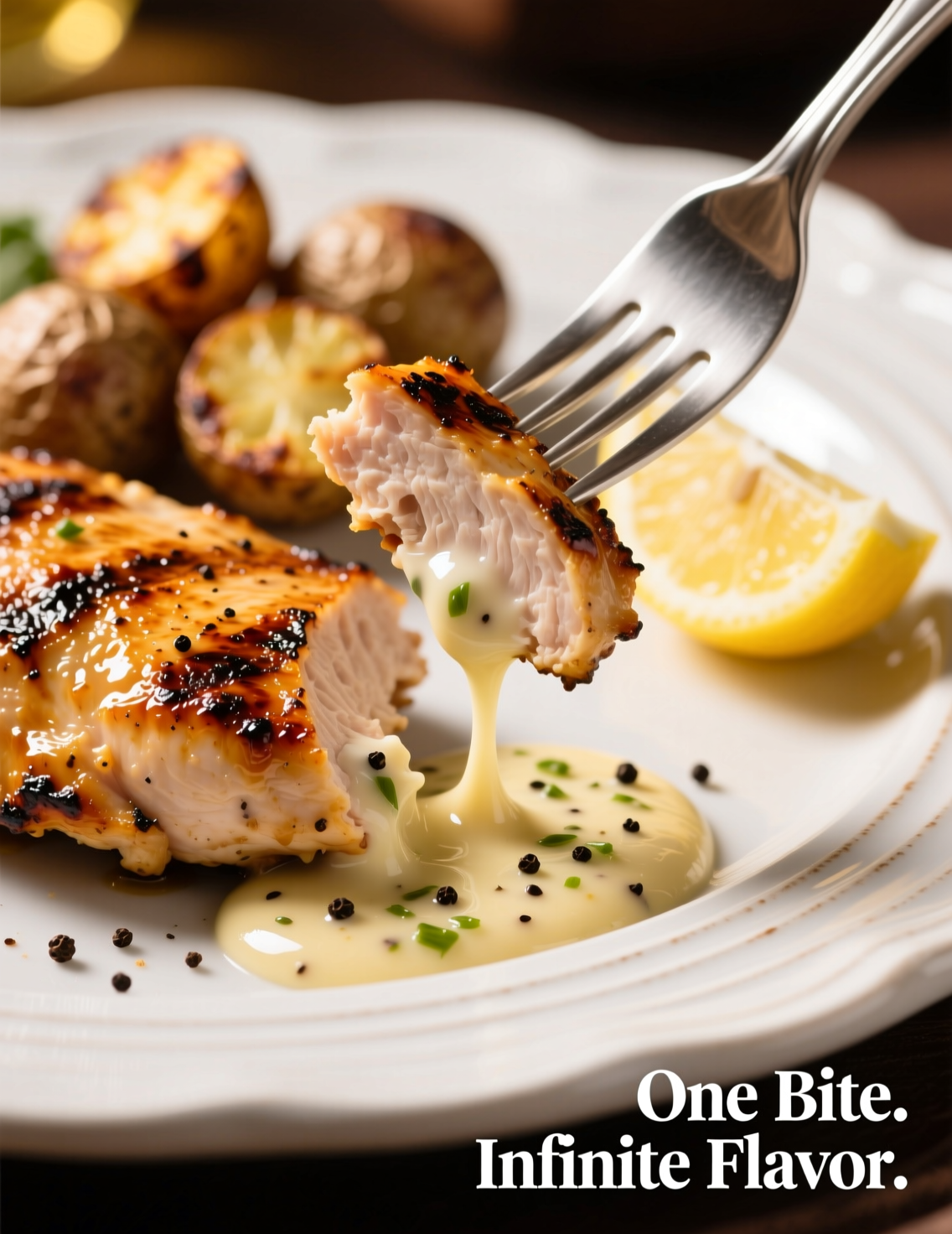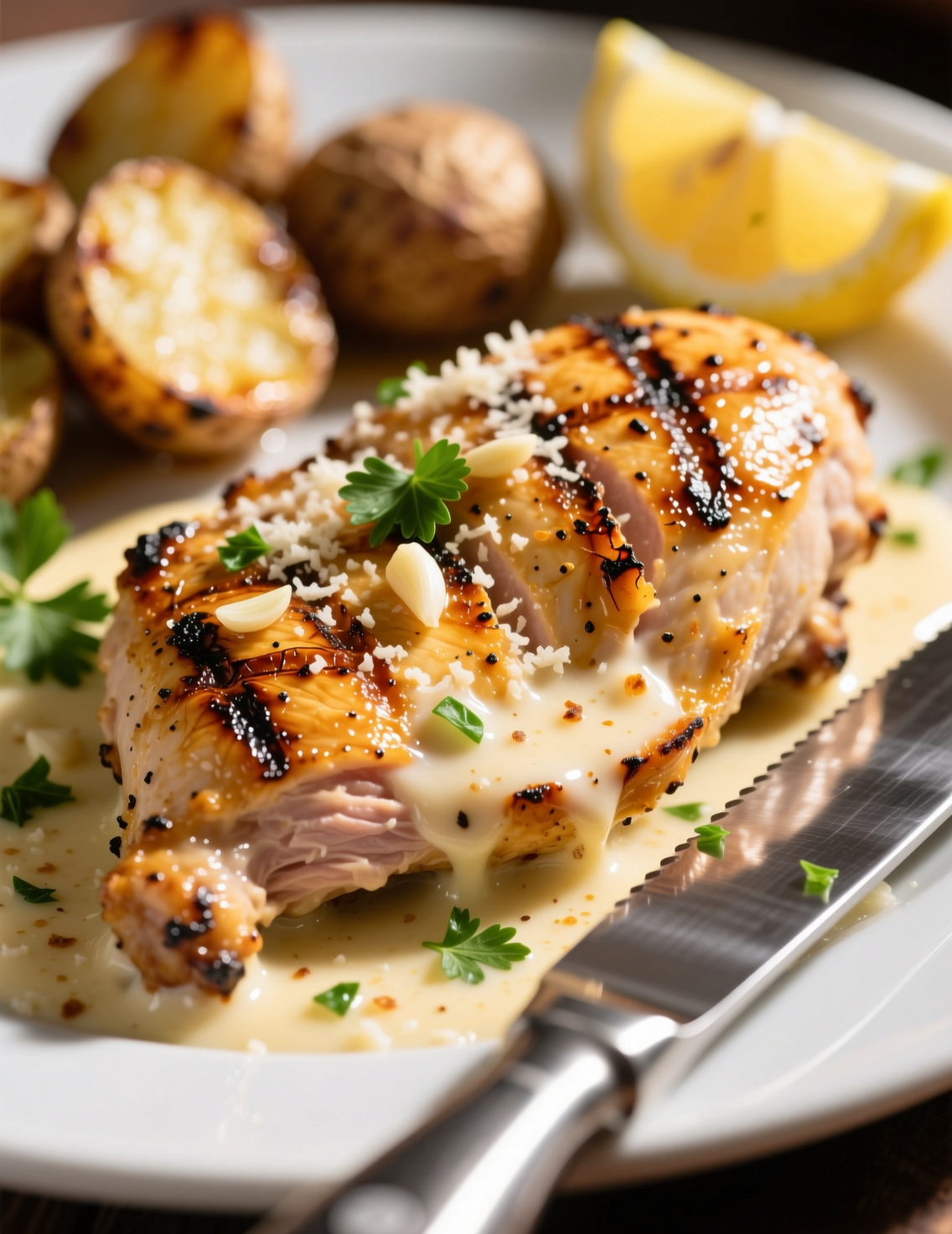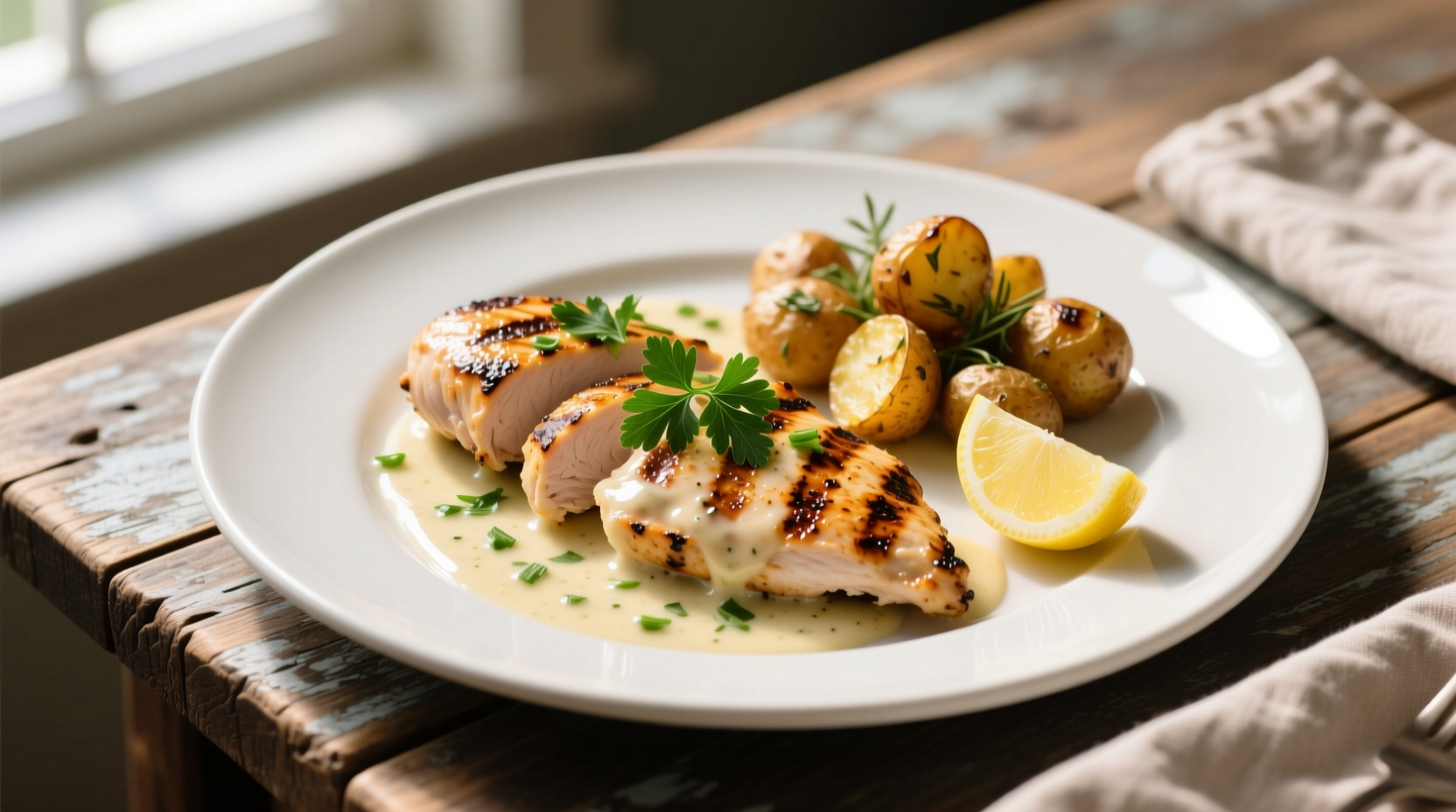There are recipes that simply taste good, and then there are recipes that stay in memory long after the plates are cleared. Garlic Parmesan Grilled Chicken sits firmly in the second camp. A dish with roots in the classic pairing of garlic and cheese, balanced by the smokey kiss of a grill, it offers both comfort and sophistication. This article breaks down not just how to make it, but also the why behind every step, so professionals can refine, tweak, and even elevate the recipe further.
Why Garlic Parmesan?
Garlic and Parmesan have been culinary partners for centuries. Garlic’s sulfur compounds release intense, earthy aromas when heated, while Parmesan’s glutamates give that deep umami kick chefs chase. Together they form a flavor base that’s almost impossible to beat. When layered over charred chicken, you get a dish that feels rustic but still polished enough for high-end dining.
Interestingly, studies from food science journals show that Parmesan triggers the same savory receptors as aged meats like prosciutto. This means when paired with protein like chicken, your brain almost amplifies the flavors. Garlic, meanwhile, activates salivation, which heightens taste perception. It’s no accident this duo works.
Choosing the Right Chicken
Not all chicken is equal here. Boneless, skinless breasts are common, but they can dry quickly on the grill. Professionals often turn to thighs for extra juiciness. But if presentation matters—say you’re plating for guests or clients—breasts remain the sleek choice.
For a recipe serving four, you’ll want about 1 ½ pounds total, ideally four evenly sized cuts. Uniform size isn’t just about looks, it ensures even cooking. Small differences in thickness can mean one piece turns juicy and golden while another dries out before it’s safe to eat. A meat mallet or even a rolling pin can help even things out before marinating.
Building the Marinade
The marinade is where flavor gets layered deep. A simple olive oil base is essential. Oil carries fat-soluble compounds from garlic and herbs into the meat fibers. Add grated Parmesan—real Parmigiano-Reggiano if available, not the powder in a shaker. Freshly grated cheese has volatile aromas that bind better during grilling.
A sample base marinade for 4 servings might include:
- ¼ cup olive oil
- 4 cloves garlic, minced fine
- ½ cup freshly grated Parmesan
- Juice of half a lemon
- 1 tsp kosher salt
- ½ tsp cracked black pepper
- 1 tbsp chopped fresh parsley
- Optional: pinch of red chili flakes for subtle heat
Whisking this until smooth is crucial. If Parmesan clumps, the coating won’t distribute evenly. A trick chefs use is to add the cheese last, folding it gently into the oil-garlic emulsion. This way, the particles remain suspended rather than sticking to the whisk.

The Science of Marination
There’s debate in kitchens about how long chicken should marinate. Contrary to popular belief, acids don’t penetrate meat deeply. They mostly affect the surface. Soaking chicken in lemon-heavy marinades overnight often makes it mushy, not tender.
For Garlic Parmesan chicken, 2–4 hours is ideal. Long enough for the garlic oils to migrate inward, short enough to preserve structure. A Journal of Food Science experiment on marinades showed that salt and fat penetrate better than acid. This means olive oil and salt in your base matter more for flavor infusion than lemon juice. The lemon here is primarily for brightness.
Prepping the Grill
Grilling is where this dish truly takes flight. High direct heat locks in surface caramelization, while a gentle indirect zone ensures the interior cooks safely. Professional kitchens often use dual-zone setups: one side hot enough to sear, the other cooler for finishing.
If using gas, preheat to medium-high, around 400°F. For charcoal, let coals ash over and bank them to one side. Brush grates with oil just before placing chicken down. Stuck chicken isn’t just messy; it tears fibers and loses juice.
One overlooked step—let the chicken sit at room temperature 20 minutes before grilling. Cold meat contracts hard on hot grates, forcing juices out. Room-temp protein relaxes into the grill, making better sear marks and less shrinkage.
Technique: Grilling to Perfection
Lay chicken on the hot zone first. Two to three minutes per side will give you that golden crust. Don’t move it too early—proteins need time to release naturally. After searing, shift to the cooler side, cover the grill, and let the meat finish gently.
Internal temperature should hit 165°F in the thickest part. A good instant-read thermometer is non-negotiable for consistency. Pulling chicken off at 160°F and letting carryover heat finish the job avoids drying. Resting five minutes under loose foil allows juices to redistribute. Skip this and you’ll find a puddle on the plate instead of in the meat.
Crafting the Parmesan Garlic Finish
Now comes the flourish. While chicken rests, prepare a quick finishing sauce. Melt 2 tbsp butter in a pan, add a clove of minced garlic, and cook until fragrant—about 30 seconds. Toss in another ¼ cup of Parmesan and a sprinkle of parsley.
This warm mixture gets spooned over the grilled chicken just before serving. It acts as both glaze and garnish. Some chefs like to add a touch of cream for silkiness, but this can mask the grill’s smokiness. Butter remains the purest enhancer.
Pairings That Elevate
What to serve alongside matters as much as the chicken itself. Classic pairings include roasted asparagus, grilled zucchini, or a bright arugula salad. Carbs like garlic bread or a lemony orzo pasta balance richness.
Wine professionals might lean toward a crisp Sauvignon Blanc, its acidity cutting through the fat. For beer, a citrusy IPA complements garlic’s bite while handling Parmesan’s saltiness. Surprisingly, even a dry rosé works beautifully—it matches grilled flavors without overpowering.
Common Mistakes Professionals Still Make
Even experienced chefs fall into traps. Overcrowding the grill is one. When too many pieces cook at once, steam builds instead of char. Another mistake is skipping the rest step—tempting in busy kitchens, but costly in quality.
Undersalting marinades is also frequent. Parmesan brings salt, yes, but it doesn’t penetrate like table salt does. Always season the meat itself lightly before grilling, then rely on Parmesan for surface umami.

Variations Worth Trying
The base recipe is flexible. Adding panko crumbs to the finishing butter-Parmesan mix creates a crunchy topping. Mixing in roasted garlic instead of raw mellows the bite and adds sweetness. Some chefs swap parsley for basil or oregano for a Mediterranean spin.
For modern dining, plating it over creamy polenta makes a restaurant-level dish. Or slice the chicken thin and serve in warm pita with tzatziki for a casual but elevated option.
Nutrition and Health Considerations
Each serving of this recipe averages around 340–380 calories depending on cut size and cheese quantity. Protein lands high, roughly 35 grams, while fat sits around 18 grams. Sodium can creep up, especially with Parmesan, so balance sides with low-salt options.
Garlic brings health perks too—allicin compounds have shown antimicrobial and cardiovascular benefits in several clinical studies. Parmesan offers calcium and protein, but also sodium, so portion control matters. For athletes, this recipe balances muscle recovery (protein) with energy (healthy fats).
Trends and Insights
Grilled chicken recipes with bold yet simple marinades are among the most searched on recipe databases. According to Google Trends, interest in “garlic Parmesan chicken” peaks around summer grilling season. Restaurants have tapped into this by offering Parmesan crusted chicken dishes on seasonal menus.
For professionals, this shows staying power. The pairing of garlic and Parmesan isn’t fading anytime soon—it’s a flavor archetype. Grilled versions offer a healthier, less heavy alternative to fried Garlic Parmesan wings, appealing to wellness-focused diners.
Final Thoughts
Garlic Parmesan Grilled Chicken is more than a weeknight recipe. It’s a showcase of technique—balancing marinade chemistry, heat control, and finishing flair. For professionals, it’s a versatile dish that can anchor a casual backyard gathering or a plated fine-dining menu.
The key takeaways: use real Parmesan, don’t over-marinate, control your grill zones, and finish with that buttery glaze. Small details, like resting and even slicing against the grain, elevate it from ordinary to unforgettable.
Try it once with precision, then experiment with tweaks until it feels like yours. That’s the real beauty of recipes like this—they’re a foundation, not a finish line.
FAQs
How long should I marinate Garlic Parmesan Grilled Chicken?
About 2–4 hours is enough for flavor without making the chicken mushy.
Can I use chicken thighs instead of breasts?
Yes, thighs stay juicier and add more richness, but breasts look cleaner for plating.
What temperature should the chicken reach on the grill?
The internal temperature should hit 165°F for safe eating.
Should I use fresh or powdered Parmesan?
Always use freshly grated Parmesan for better flavor and texture.
Can I grill this on a stovetop grill pan?
Yes, a cast iron grill pan works well if outdoor grilling isn’t possible.
What sides go best with this dish?
Roasted vegetables, light pasta, or a crisp salad balance it perfectly.
Do I need to let the chicken rest after grilling?
Yes, rest 5 minutes so the juices redistribute and stay in the meat.
Can I make this ahead of time?
You can marinate ahead, but grill just before serving for best results.
Is this recipe healthy?
Yes, it’s high in protein and moderate in fat, though Parmesan adds sodium.
Can I add a crunchy topping?
Yes, mix panko breadcrumbs with Parmesan and butter for a crisp finish.

Mariana is a passionate home cook who creates delicious, easy-to-follow recipes for busy people. From energizing breakfasts to satisfying dinners and indulgent desserts, her dishes are designed to fuel both your body and hustle.
When she’s not in the kitchen, she’s exploring new flavors and dreaming up her next recipe to share with the Foodie Hustle community.

